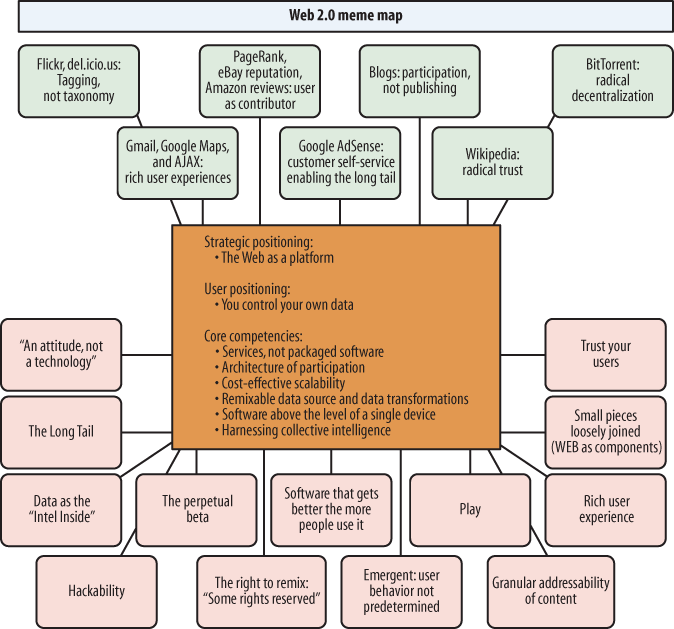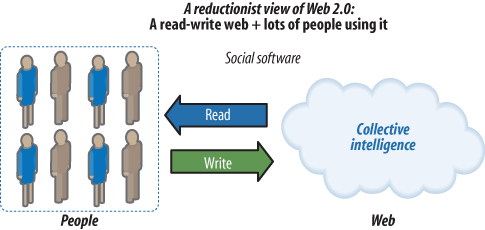Tim’s examples illustrate the foundations of Web 2.0, but that isn’t the end of the conversation. Another way to look at these concepts is through a meme (pronounced “meem”) map. A meme map is an abstract artifact for showing concepts and their relationships. These maps are, by convention, ambiguous. For example, if two concepts are connected via a line, you can’t readily determine what type of relationship exists between them in tightly defined ontological terms. Figure 3-23 depicts the meme map for Web 2.0, as shown on the O’Reilly Radar website.
This map shows a lot of concepts and suggests that there are “aspects” and “patterns” of Web 2.0, but it doesn’t offer a single definition of Web 2.0. The logic captured in the meme map is less than absolute, yet it declares some of the core concepts inherent in Web 2.0. This meme map, along with the Web 2.0 examples discussed earlier in the chapter, was part of the conversation that yielded the patterns outlined in Chapter 7. Concepts such as “Trust your users” are primary tenets of the Participation-Collaboration and Collaborative Tagging patterns. “Software that gets better the more people use it” is a key property of the Collaborative Tagging pattern (a.k.a. folksonomy). “Software above the level of a single device” is also represented with the Software as a Service and Mashup patterns.
Figure 3-24 shows a reductionist view of Web 2.0. Reductionism holds that complex things can always be reduced to simpler, more fundamental things, and that the whole is nothing more than the sum of those simpler parts. The Web 2.0 meme map, by contrast, is a largely holistic analysis. Holism, the opposite of reductionism, says that the properties of any given system cannot be described as the mere sum of its parts.
In a small but important way, this division captures an essential aspect of the debates that surround Web 2.0 and the next generation of the Web in general: there is one set of thinkers who are attempting to explain what’s happening on the Web by exploring the fundamental precepts, and another set who seek to explain in terms of the things we’re actually seeing happen on the Web (online software as a service, self-organizing communities, Wikipedia, BitTorrent, Salesforce, Amazon Web Services, etc.). Neither view is complete, of course, though combining them could help.
In the next part of the book, we’ll delve deeper into detail, some of it more technical, and try to distill core patterns that will be applicable in a range of scenarios.


